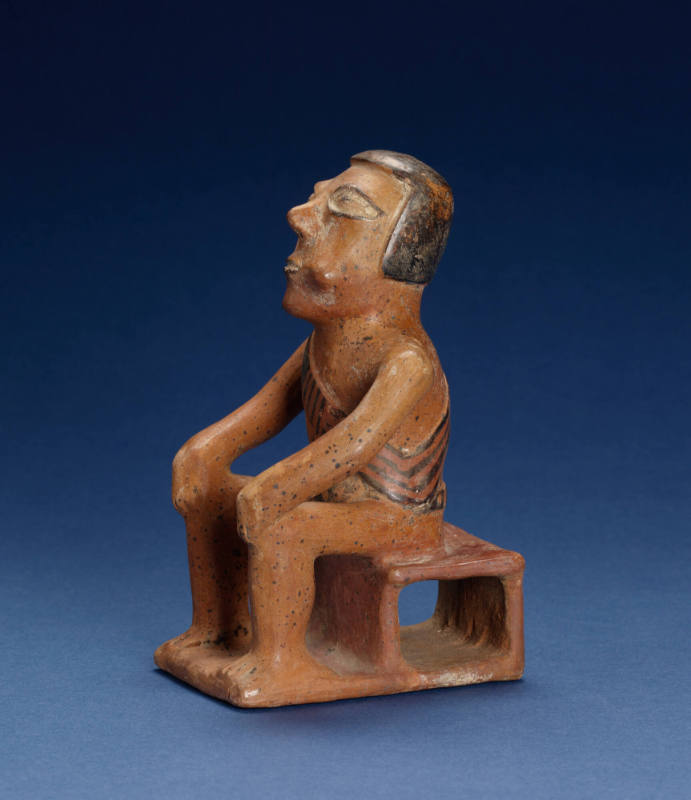


Object Details
Culture
Capuli, Northern Highlands (Ecuador)
Date
ca. 300-1 B.C.
Medium
Ceramic
Dimensions
7 1/4 x 2 3/4 inches (18.4 x 7 cm)
Credit Line
Gift of Peggy and Tessim Zorach
Object
Number
74.053.001
WHERE WAS IT MADE?This vessel was made in the mountainous region of the northern part of what is now(…)
WHERE WAS IT MADE?This vessel was made in the mountainous region of the northern part of what is now Ecuador.HOW WAS IT MADE?This figure was made by hand modeling soft clay. The base and bench were formed from slabs of clay – clay that has been rolled out flat to a desired thickness. The figure has black resist-painted decoration, which is characteristic of Capulí pottery, and the surface was burnished prior to firing in an earthen pit. HOW WAS IT USED?The original function of archaeological figurines found in museum collections is uncertain. Today archeologists carefully record information about the associations between artifacts and the circumstances of their burial as they are unearthed, and we can draw many conclusions about object function. However, very few of the archaeological objects found in museums today were excavated in a careful, scientific manner, so we have fewer clues about their past associations and function. A wide range of people and objects are shown in pre-Columbian pottery. From burials, we know that the variety of jewelry and clothing styles reflect the actual appearance of many of these prehistoric people. Because figurines represent many life stages and ordinary human activities, they likely served to exemplify the usual norms of behavior, to serve as guidelines or rules to help socialize people and integrate them into society. Although obviously decorative, figurines could also have been used to make offerings to supernatural powers, to serve as good luck charms, or to accompany the dead as grave goods.WHY DOES IT LOOK LIKE THIS?This male figure is seated on a stool, the symbol of chiefly power and prestige. The stool is a standard piece of equipment for tropical forest shamans even today, providing stability as a shaman takes narcotics (which can be in the form of the coca leaf) to commune with the spirit world. Stools in the pre-European Americas were status symbols used by chiefs. In small societies such as in modern Amazonian tribes, the shaman often served as the chief as well. Notice the figure’s bulging cheek, characteristic of those with a coca quid in their mouth, from chewing coca leaves. The Spanish word coquero (coca-chewer) refers to the widespread practice of chewing coca leaves; coca-chewing was widely practiced in the past and continues to be an important part of traditional lifestyles in the Andes today. A pinch of an alkaline substance such as powdered lime is added to the coca leaves to strengthen the stimulant effect, and the chewed quid is kept in the mouth until the effect ceases.












